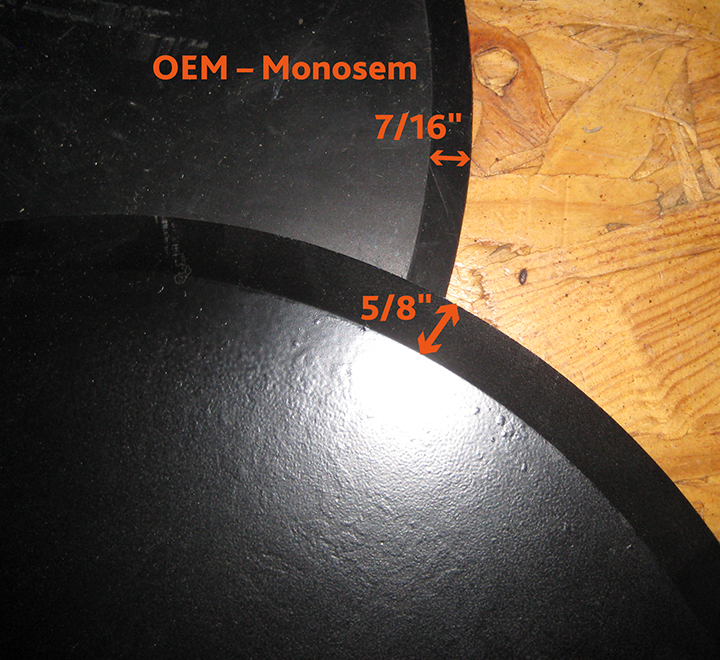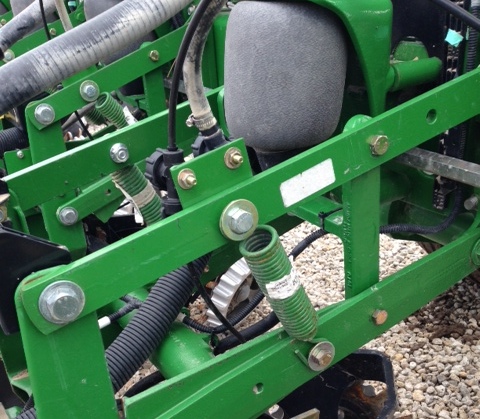Air Drills & Other Air-distribution Systems
Exapta has always focused on the soil-engaging components of planter & grain drill openers in no-till seedbeds. That has been the weakest link.
Exapta has always focused on the soil-engaging components of planter & grain drill openers in no-till seedbeds. That has been the weakest link.

‘Round and ’round. More choices than ever. I continue to see more aftermarket suppliers and OEMs (Monosem) putting 4mm-thick planter opener disks/blades
Many of you are perplexed as to why we at Exapta endorse certain seed opener designs for no-till (NT) and not others. (And many of you wonder if I’m qualified to render judgment at all 🙂 but
Thinking about upgrading tractors, combines, sprayers? The features and capacity are what everyone dreams of and drools over.
Some of you are faced with harvest activities on very damp to muddy soils. Check your tire pressures! This is a zero cost way to A) reduce compaction
We’ve been waiting for a very long time for some significant improvement in no-till drills — something low-disturbance, with

With the planting season still fresh in your mind (unexplained variation in plant size? –any correlation to seed depth?),
We at Exapta have long emphasized the importance of adequate seed-to-soil contact. For instance, I saw enough evidence in ‘95 that I realized that Keetons
Many of you know the tribulations of fishing this 1/4” tubing for liquids thru the small hole in the Keeton bracket. It’s awkward, and dark, and
The first plant part to emerge from a germinating seed is a root, called the radicle (not radical) in both dicots (‘broadleaf’ plants) and monocots (grasses).
Since many farmers in the US & Canada are contemplating equipment trades or purchases at this time of year, I’d like to weigh in with a few thoughts on harvesting equipment.
Many of you are fighting to get your corn crop planted in the mud across the central & eastern corn-growing areas of the US/Canada.
Content of this page is copyright 2005-2025 Exapta Solutions, Inc. (reprint with written permission only).
Thompson wheel covered by U.S. Patent No. 6,907,833. Liquid delivery feature of Valion seed tube guards is U.S. Patent No. 8,978,564. Ninja seed bounce flap U.S. Patent Pending. UniForce U.S. Patent Pending. All rights reserved on other designs. Exapta is a registered trademark of Exapta Solutions, Inc. Keeton is a registered trademark of Precision Planting. Mojo Wire, Thompson wheel, Valion guard, Ninja flap, UniForce, DuraLok, No-till Seeding Explained, and No-till Seeding School are trademarks of Exapta. Disclaimer: Recommendations & page content are current, accurate, and believed to be broadly applicable as of the time of writing (Dec 2005) and last update (2005 – 2014). Because of diversity of soils, climate, crops, planter & drill models/designs marketed worldwide, combinations of attachments, etc., actual results may vary. No warranty is made as to actual results obtained. Should you encounter exceptions or worthwhile annotations to the statements made on this page, please contact us.
Derek is Kansas native who grew up in a 100% no-till farming operation. From an early age the benefits of no-till were made known to Derek by his father and by attending no-till conferences. From there he furthered his passion for soils while at Kansas State University getting his agronomy degree. He has had the experience of working in various roles and sectors of agriculture from sales and consulting to management, which have all been within production agriculture. Derek has also worked in specialty ag markets such as turf and ornamentals.
Sales & Service Representative
Prior to joining Exapta, Bob Pagel was an Agricultural Territory Sales Manager for Ritchie Brothers, serving parts of MN, WI and IA. He continues to support his family farm in SE Minnesota.
Current Product Engineer
Jonathan Zeller joined Exapta excited to return to working with no-till planting equipment. He supported research of no-till planting and other ag related projects for 7 years with Kansas State University’s Agricultural Engineering Department after getting his engineering degree. He later worked 3 years for Landoll Company, LLC. where he gained experience in a design engineering role. Jonathan grew up on a small family farm in NE Kansas working with row crops, hay and cattle. Jonathan enjoys solving engineering problems and improving or creating products to be robust and easy to install and service.